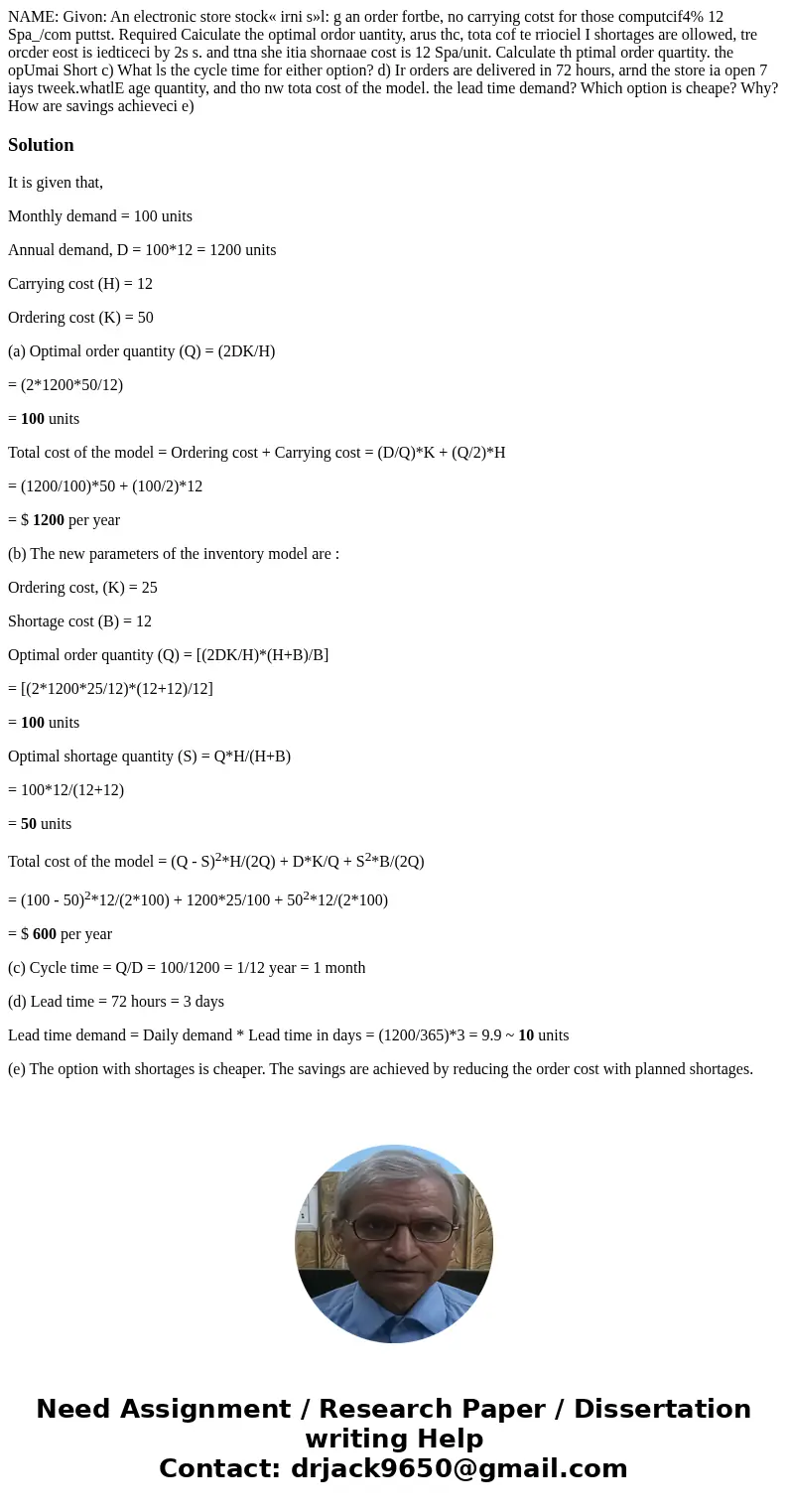NAME Givon An electronic store stock irni sl g an order fort
Solution
It is given that,
Monthly demand = 100 units
Annual demand, D = 100*12 = 1200 units
Carrying cost (H) = 12
Ordering cost (K) = 50
(a) Optimal order quantity (Q) = (2DK/H)
= (2*1200*50/12)
= 100 units
Total cost of the model = Ordering cost + Carrying cost = (D/Q)*K + (Q/2)*H
= (1200/100)*50 + (100/2)*12
= $ 1200 per year
(b) The new parameters of the inventory model are :
Ordering cost, (K) = 25
Shortage cost (B) = 12
Optimal order quantity (Q) = [(2DK/H)*(H+B)/B]
= [(2*1200*25/12)*(12+12)/12]
= 100 units
Optimal shortage quantity (S) = Q*H/(H+B)
= 100*12/(12+12)
= 50 units
Total cost of the model = (Q - S)2*H/(2Q) + D*K/Q + S2*B/(2Q)
= (100 - 50)2*12/(2*100) + 1200*25/100 + 502*12/(2*100)
= $ 600 per year
(c) Cycle time = Q/D = 100/1200 = 1/12 year = 1 month
(d) Lead time = 72 hours = 3 days
Lead time demand = Daily demand * Lead time in days = (1200/365)*3 = 9.9 ~ 10 units
(e) The option with shortages is cheaper. The savings are achieved by reducing the order cost with planned shortages.

 Homework Sourse
Homework Sourse